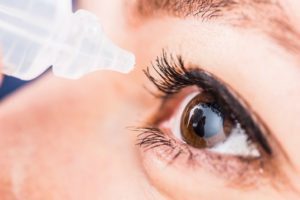
Some of us experience this condition for short periods of time when allergy season arises, but others have a chronic form of the problem. It was these chronic sufferers that first interested the researchers into looking at the potential effects on daily life that dry eye might have.
“Many of my patients have perfect vision on standard eye tests but complain they cannot drive at nighttime or in unfamiliar areas, read small print or do computer work,” said lead investigator Esen Akpek. “We suspected that people with dry eye were mostly unable to sustain good reading performance because their tears can’t re-lubricate their eye surfaces fast enough.”
The study was performed at Johns Hopkins and included 186 participants, aged 50 or older, a majority of which were women. Participants were recruited from the Ocular Surface Disease and Dry Eye Clinic at the Wilmer Eye Institute.
The participants were asked not to use any prescription or over-the-counter eye drops for 24 hours before the study testing. Out of the total group of participants, 116 were found to have clinically significant dry eye syndrome. There were 39 participants who described having symptoms of dry eye, but the study findings showed their cases were not clinically significant.
Finally, there were 31 participants who did not have dry eye and who did not report experiences of dry eye and they were used as the control group.
Dry Eye Sufferers Read Slower
The researchers found that dry eye could slow down a person’s reading rate by up to 10 percent. Participants also complained of having trouble reading for more than 30 minutes at a time. The participants with clinically significant dry eye read 32 fewer words per minute than either of the other two groups. Participants with clinical dry eye read at an average rate of 240 words per minute, and the other two groups averaged 272 words per minute.
The researchers say that activities such as reading or driving are hard on everyone’s eyes because they require prolonged periods of visual acuity, which changes the rate at which our eyes blink. The findings of the study support the hypothesis that these activities affect patients with clinical dry eye more than those without an eye condition.
The researchers hope to use these findings, as well as tear samples collected from the participants, to perform future studies that will lead to new understandings of the many causes of dry eye syndrome as well as better treatment options for those who suffer from it.
Currently, treatment options include prescription-strength eye drops, lifestyle or environmental changes, or surgical procedures to increase the natural rate of tear production in the eye. If you are experiencing symptoms of dry eye, the researchers urge you to get tested by a medical practitioner.
Also Read:
- Primary open-angle glaucoma treatment: Home remedies to manage glaucoma in elderly
- Glaucoma: Natural home remedies and diet
- Is glaucoma hereditary or a genetic disease?